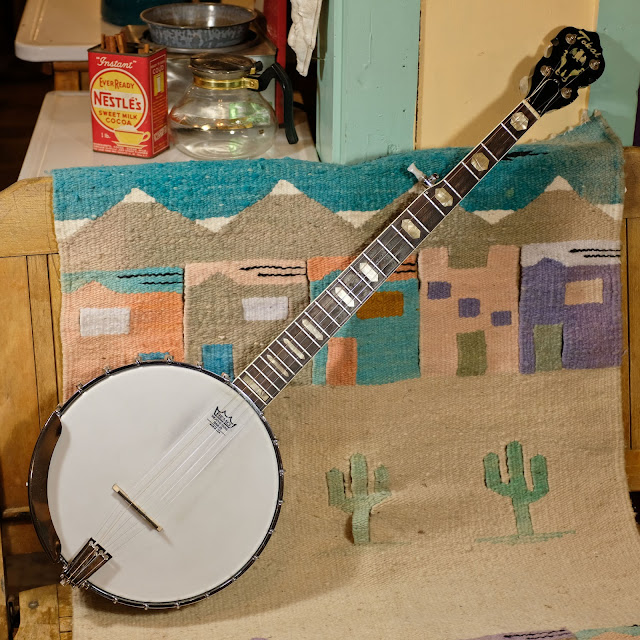Workshop: Openback Mastertone 5-String
When I initially traded for a Tokai T-600R "Masterclone" banjo, I did it because I liked the neck on it, thought it had a great sound, and saw that it was a decent instrument of the mid-'70s Japanese banjo persuasion -- something I've become a fan of when we're talking mid-market and up. I glossed-over the self-destructing rim part of it, though. The rim was staying-pat in use but the tearing-apart "beading" between the tonering and the flange put my mind ill-at-ease.
So -- since I don't like big, wide resonators or painful weight, but do like the sound of a good flathead tonering, I swapped the compatible hardware from the ailing Mastertone-style rim over to a '30s Kay banjo-mandolin rim I've had squirreled-away in my parts-pile. I don't like to mix-and-match parts from so far apart in time if I can help it, but since no one is truly into '30s, missing-all-their-parts Kay rims, I figured it was a win-win.
It took a little finagling (I was doing this as fast as I could), but the result is good, methinks. I've been enjoying it ever since -- it has that tone I like but in a more accessible, ears-friendly format. It also doesn't drive women away and the kids can be within a few feet of it now, too, without their ears bleeding.
Seriously, though, I think flathead tonerings should be used in more openbacks. They have such innate power that you can play really lightly and still have a lot of sound -- and they don't compress into yick when you play them hard. With the right (subdued) head tightened a little slack, I'll bet they'd nail that "modern" clucky-but-precise-but-sweet old time flavor just fine.




Comments